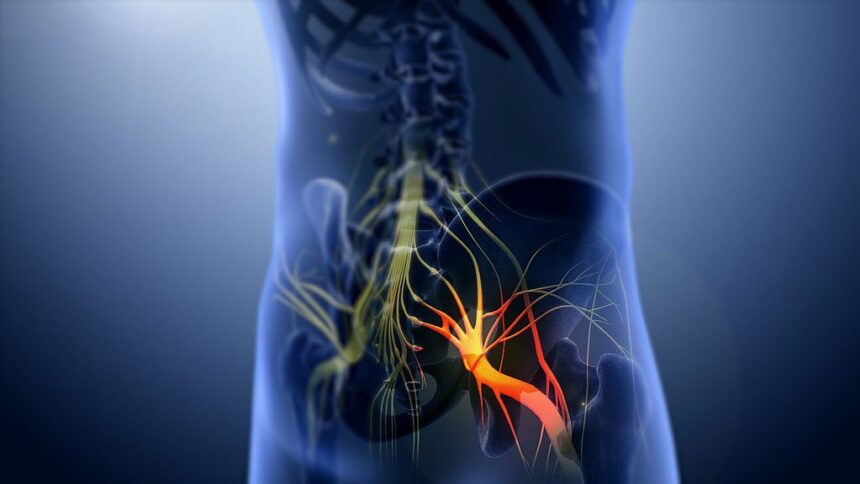Leg pain can present as anything from a dull ache to sharp, shooting sensations that disrupt daily activities. Sciatica represents one specific type of leg pain that originates from irritation or compression of the sciatic nerve. Understanding this connection helps you recognize when your leg discomfort might stem from sciatic nerve involvement rather than other causes. Here is more information about this connection:
Sciatic Nerve Connection
The sciatic nerve extends from your lower back through your hips and pelvis, then travels down each leg. This massive nerve bundle carries signals between your brain and the muscles in your lower body. When something interferes with this nerve pathway, sciatica can affect your back and your entire leg.
Your sciatic nerve reaches your thigh, calf, and foot. Due to its extensive reach, problems with this nerve have widespread effects. The nerve branches into smaller nerves as it travels down your leg, which explains why sciatic pain affects different areas depending on where the interference occurs.
Nerve Gets Pinched
Several conditions lead to sciatic nerve compression. Herniated lumbar discs represent a typical cause, occurring when the soft center of a spinal disc pushes through its outer layer and presses against the nerve root. Spinal stenosis narrows the spaces within your spine, creating pressure on the sciatic nerve.
Bone spurs, pregnancy-related changes, and other conditions also contribute to nerve compression. Each of these conditions creates physical pressure on different parts of the sciatic nerve pathway. The location and severity of compression determine the specific symptoms you experience.
Pain That Radiates
Sciatic pain follows a distinct pattern that helps distinguish it from other types of leg pain. The discomfort typically begins in your lower back or buttocks and travels down the back of your thigh. It may continue into your calf and sometimes reach your foot. This radiating pattern sets sciatica apart from localized muscle pain or joint problems.
Some people describe burning or tingling feelings. Others experience sharp, electric-like jolts that shoot down their leg. Numbness and weakness may accompany the pain, particularly in your foot or toes.
Sitting may worsen symptoms, while walking or changing positions may provide relief. Coughing or sneezing might intensify the pain due to increased pressure in your spine. Proper diagnosis and early intervention are needed to manage sciatica and prevent long-term complications effectively.
Guidance From a Professional
Healthcare professionals use various methods to diagnose sciatica and identify its underlying cause. Treatment approaches vary based on the severity and cause of your nerve compression. Physical therapy addresses muscle imbalances and improves flexibility. Medications may reduce inflammation and manage pain levels. Injection therapies target specific areas of nerve irritation. Surgical intervention becomes necessary when conservative treatments fail to provide relief or when nerve compression threatens permanent damage.
Identify the Source of Leg Pain
Recognizing the connection between leg pain and sciatica empowers you to seek appropriate care. The radiating nature of sciatic pain, combined with its specific distribution pattern, provides valuable clues about nerve involvement. While other conditions may cause similar symptoms, the characteristic pathway of sciatic pain helps narrow the diagnostic possibilities. Contact a clinic today to schedule a comprehensive evaluation and discover the most effective treatment approach for your specific situation.














